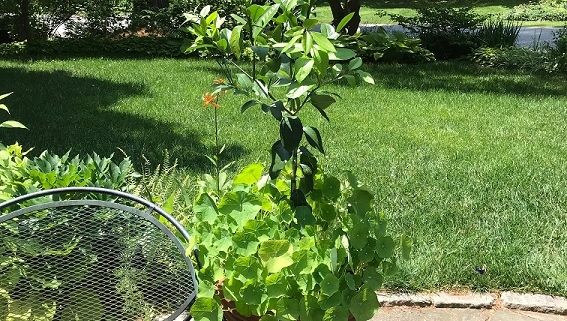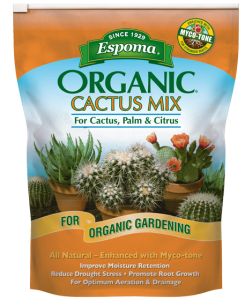8 Tips and Tricks for Dwarf Citrus Plants
Citrus trees provide year-round greenery, extraordinarily fragrant flowers and, beautiful, delicious fruit. What plant parent wouldn’t want a baby like that? You don’t need to have a big garden or year-round summer] to grow them either. Citrus trees thrive in containers and can be brought indoors for the winter and be enjoyed all year long.
Best Citrus for Containers
All citrus trees can be grown in containers, however, some (like grapefruit and lemon) will outgrow their containers quickly. Choose trees grown on dwarf rootstock such as Meyer lemon and Persian lime. These are naturally smaller trees well-suited for container growing. Dwarf trees produce normal-sized fruit but yield less. Keep in mind that small trees are easier to plant, suffer less from transplant shock and are less expensive.
Pick a Pot
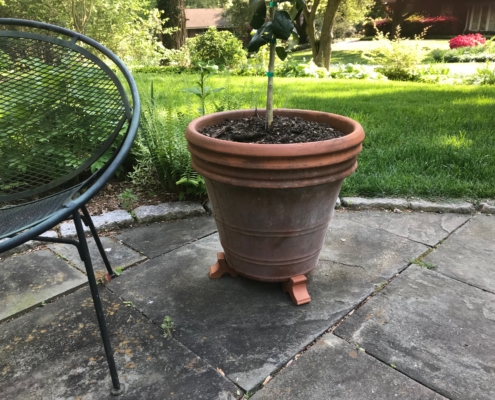
Choose a container that is larger than the nursery pot the tree came in. If the pot needs to be moved indoors in the winter consider the weight of the pot and how you will move it indoors. Make sure the new container has excellent drainage. Drill additional holes if there is only one. Set the new pot on feet so that it’s not sitting in standing water from the saucer underneath it.
Light and Temperature
Citrus are sun-loving plants that need at least eight hours of sun per day. A sunny location, protected from wind is ideal. All citrus trees are sensitive to cold and must be covered during occasional cold snaps. If your winter temperatures are consistently below 35 degrees Fahrenheit, you’ll need to bring your citrus indoors for the winter. Kumquat and mandarin are the most cold-hardy, followed by grapefruit and orange. Lemon and lime are the most sensitive to cold.
The Best Soil
The best potting soil for citrus must be free draining. Espoma’s Organic Cactus Mix works perfectly. A soil high in organic matter will decompose and become compacted, holding too much water that could cause roots to rot.
Planting
The new tree should be planted at the same level it was in its nursery pot. Add some soil to the new container, then put in the new tree to check if it is at the right depth. After planting, backfill with more cactus mix, leaving two inches at the top of the pot for watering. Water well and check to see if the soil has settled. If it has, add more soil and water that in too.
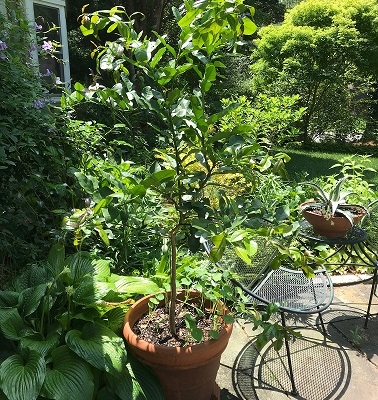
Watering
Watering needs will depend on the size and type of container and the weather. Check regularly. Citrus enjoy moist soil but not consistently wet soil. Stick your finger into the soil a few inches to check moisture level. Wilted leaves could be a sign of too little water, while yellow leaves are often a sign of too much water.
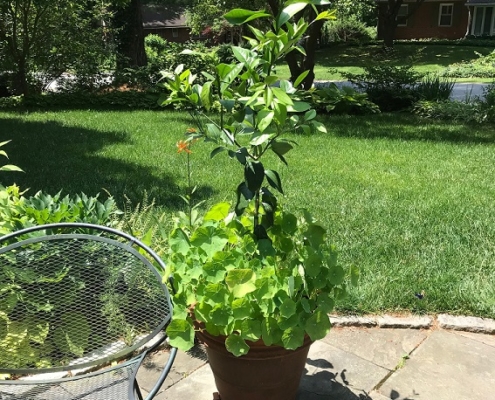
Feeding
All container plants are dependent on their plant parents for all of their nutrients. Citrus plants are heavy feeders] and need a specially formulated, organic fertilizer like Espoma’s Grow! It’s recommended to feed your tree every two to four weeks during the growing season because frequent watering washes out some of the nutrients.
Check out our other blogs about growing citrus.
When Life Gives You Lemons – Grow Them Indoors
C

